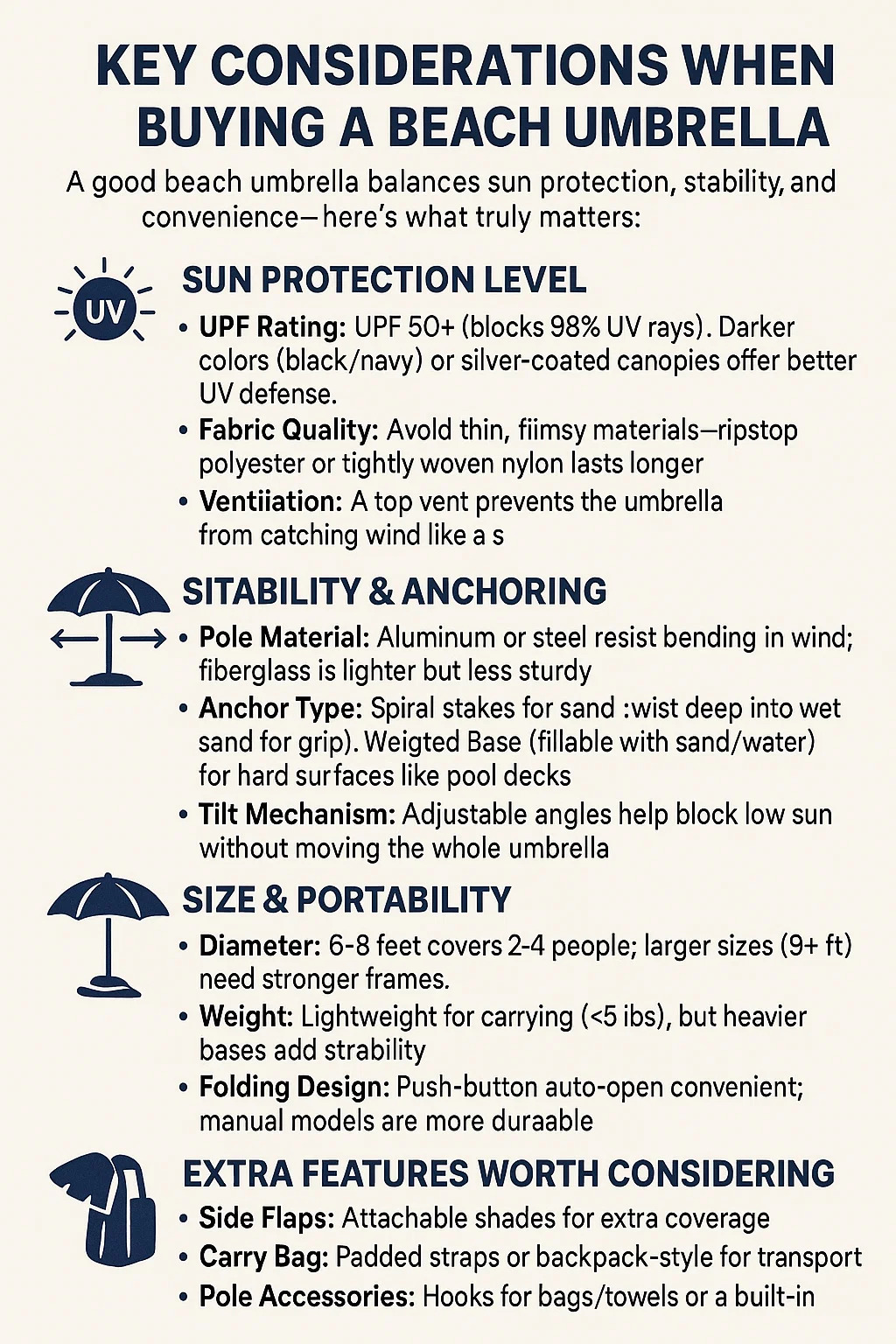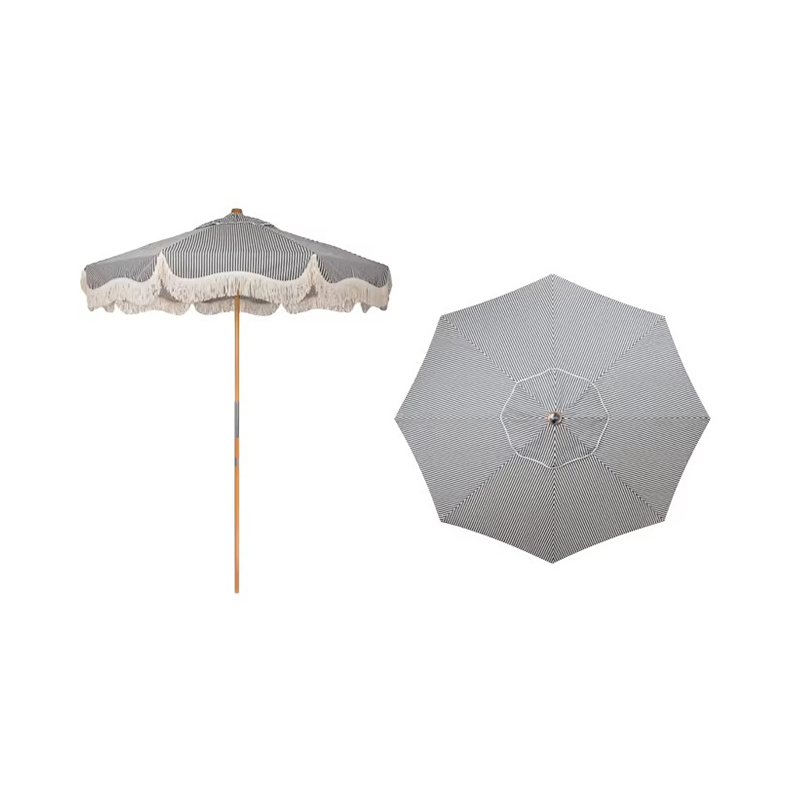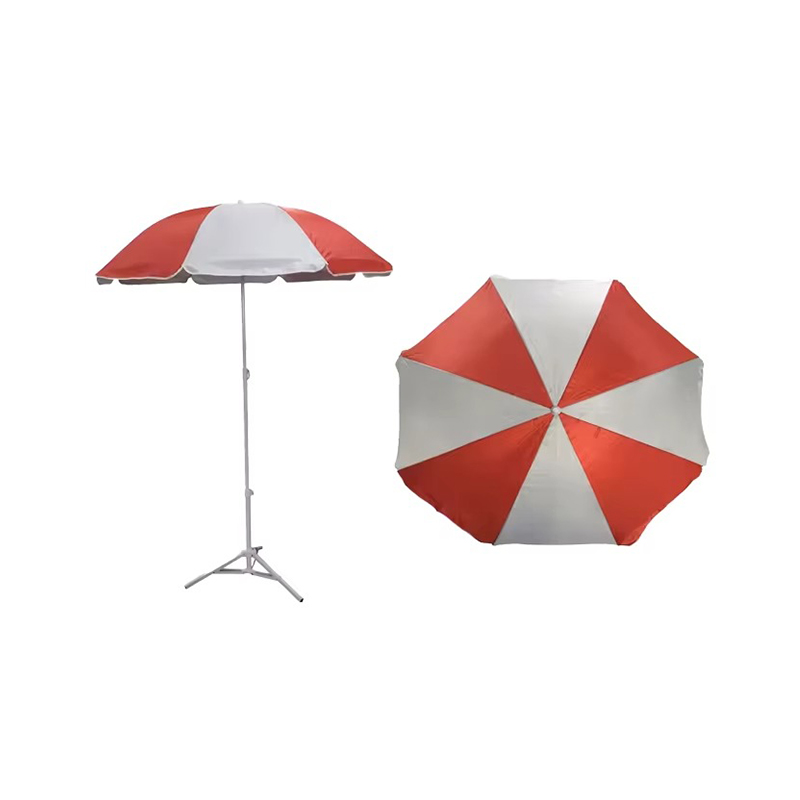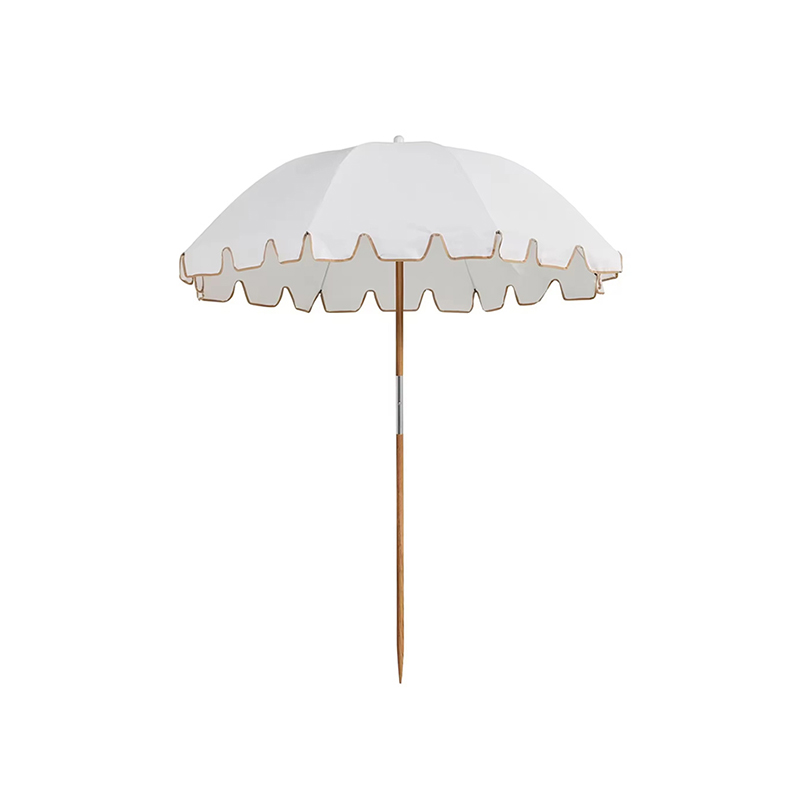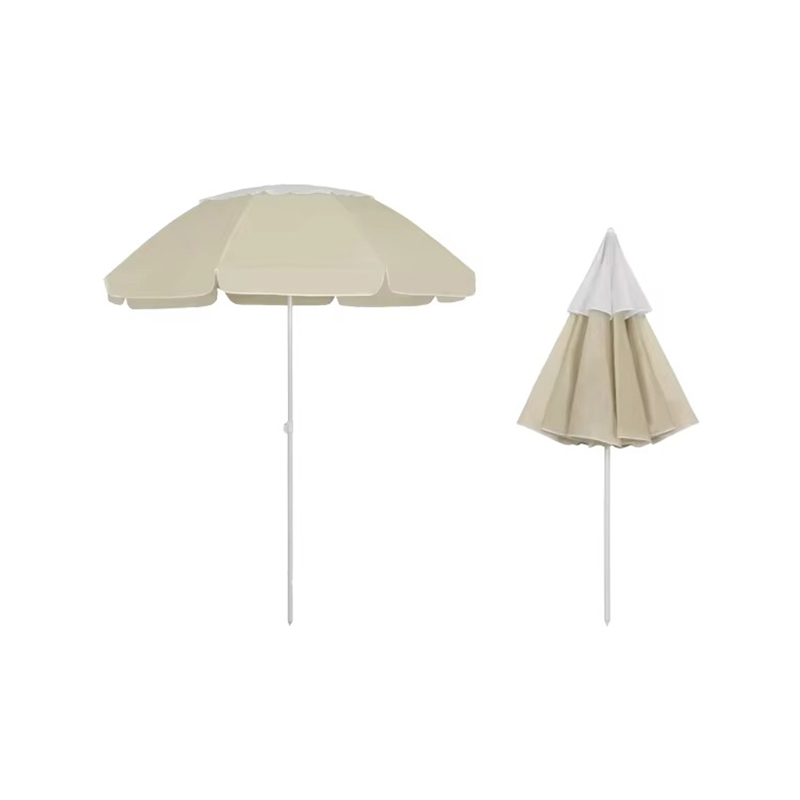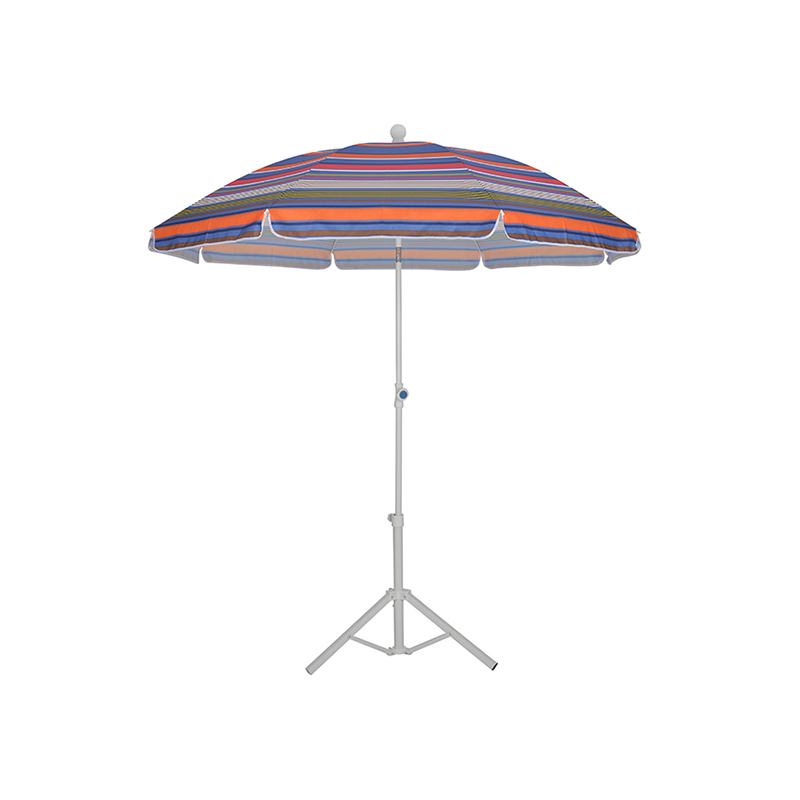What to look for when buying a beach umbrella?
Posted by Admin
Key Considerations When Buying a Beach Umbrella
A good beach umbrella balances sun protection, stability, and convenience—here's what truly matters:
1. Sun Protection Level
UPF Rating: Look for UPF 50+ (blocks 98% UV rays). Darker colors (black/navy) or silver-coated canopies offer better UV defense.
Fabric Quality: Avoid thin, flimsy materials—ripstop polyester or tightly woven nylon lasts longer.
Ventilation: A top vent prevents the umbrella from catching wind like a sail.
2. Stability & Anchoring
Pole Material: Aluminum or steel resists bending in wind; fiberglass is lighter but less sturdy.
Anchor Type:
Spiral stakes for sand (twist deep into wet sand for grip).
Weighted base (fillable with sand/water) for hard surfaces like pool decks.
Tilt Mechanism: Adjustable angles help block low sun without moving the whole umbrella.
3. Size & Portability
Diameter: 6-8 feet covers 2-4 people; larger sizes (9+ ft) need stronger frames.
Weight: Lightweight for carrying (<5 lbs), but heavier bases add stability.
Folding Design: Push-button auto-open is convenient; manual models are more durable.
4. Durability & Maintenance
Ribs & Joints: Double-stitched seams and reinforced ribs prevent collapse in wind.
Rust Resistance: Powder-coated or anodized metal parts withstand saltwater and humidity.
Ease of Cleaning: Smooth fabrics (vs. textured) resist sand buildup; machine-washable covers are a plus.
5. Extra Features Worth Considering
Side Flaps: Attachable shades for extra coverage.
Carry Bag: Padded straps or backpack-style for easier transport.
Pole Accessories: Hooks for bags/towels or a built-in bottle opener.
